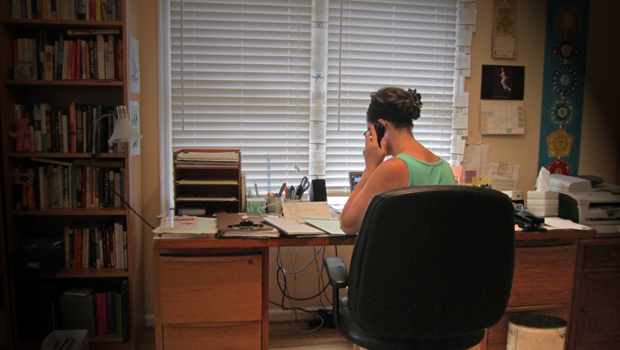

I’ve been thinking and talking about kairotic space for several years now, and during that time, my understanding of it has shifted. One significant reason for this has been my unfolding professional relationship with my co-authors, through which we’ve gotten to know each others’ communication styles and abilities, and during which we’ve compared notes on many different kinds of kairotic spaces, especially those that involve presentations or interviews.
Originally, I thought that kairotic space had to involve face-to-face time; the third criterion originally read “in-person contact.” I made this assumption—which I now believe to be erroneous—because that was how I understood presence: as a phenomenon that involved two fleshly bodies juxtaposed in physical space. But as I continued to reflect on what sorts of spaces are more and less accessible for me as a scholar, and learned more about others’ experiences, I came to realize that the third criterion, “in-person contact,” needed to be re-considered in terms of design and accessibility. What follows is an explanation of how I arrived at its current form, “Participants are tele/present.”
First, what does presence really mean? To paraphrase Gertrude Stein, how do we know there is a there there? In Alone Together, Sherry Turkle (2011) pointed to the problematic nature of presence/absence as it is mediated by digital technologies. She illustrated this complexity by describing her experience of sitting on a train next to a man who was complaining about highly personal issues into his cell phone:
Turkle’s perspective on presence (at least in Alone Together; as she herself noted, this book represents something of a departure from her earlier work, including her 1997 Life on the Screen) is both romantic and somewhat reductive. Glancing at one’s phone (or tablet) during a meeting is not only commonplace, but in some fields—including computers and writing—may be considered an enhanced form of presence, if one’s attention to the screen involves activities such as live-tweeting the event. It’s likely that most readers of this journal would take a different attitude than Turkle’s lugubrious one in the phrase “attention on the absent”—and would, like us, question what is really meant by present or absent.Embarrassed, I walked up and down the aisles to find another seat, but the train was full. Resigned, I returned to my seat next to the complainer. There was some comfort in the fact that he was not complaining to me, but I did wish I could disappear. Perhaps there was no need. I was already being treated as though I were not there.
Or perhaps it makes more sense to think of things the other way around: it is those on the phone who mark themselves as absent. Sometimes people signal their departure by putting a phone to their ear, but it often happens in more subtle ways—there may be a glance down at a mobile device during dinner or a meeting. A “place” used to comprise a physical space and the people within it. What is a place if those who are physically present have their attention on the absent? (pp. 155-156)